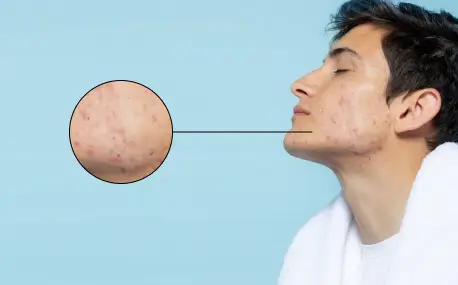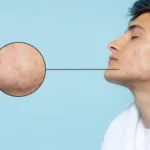
Acne may come and go, but acne scars can leave a lasting impression. While there’s no magic eraser, there are effective treatments available to minimize the appearance of acne scars and achieve smoother, more even skin.
Understanding Acne Scars:
Acne scars form when the deeper layers of your skin are damaged during a breakout. There are three main types of acne scars:
- Atrophic scars: These are indented scars that appear as ice pick scars (deep and narrow), rolling scars (wavy), or boxcar scars (wider with sharp edges).
- Hypertrophic scars: These are raised, red scars that develop due to excessive collagen production during healing.
- Keloid scars: Similar to hypertrophic scars, but larger and more aggressive, often extending beyond the original breakout area.
Treatment Options for Acne Scars:
The best treatment for acne scars depends on the type, severity, and your individual skin. Here are some popular options:
- Microneedling: This minimally invasive procedure uses tiny needles to create controlled punctures in the skin. This triggers the body’s natural healing response, stimulating collagen production to fill in atrophic scars.
- Laser Resurfacing: Different types of lasers can be used to target acne scars. Ablative lasers remove the top layer of skin, promoting new skin growth for smoother texture. Non-ablative lasers stimulate collagen production without removing skin layers.
- Fillers: Injectable fillers like hyaluronic acid can be used to plump up and elevate indented scars, creating a smoother surface.
- Dermabrasion: This mechanical exfoliation technique removes the top layer of skin, similar to ablative lasers. While effective, it has largely been replaced by lasers due to potential for side effects.
- Chemical Peels: Chemical peels use controlled application of acids to exfoliate the skin and promote even collagen production, potentially improving the appearance of mild atrophic scars.
Additional Considerations:
- Combination therapy: Often, the best results are achieved by combining different treatments. A dermatologist can create a personalized plan based on your specific needs.
- Recovery time: Procedures like laser resurfacing may require some downtime for healing.
- Realistic expectations: Acne scar treatments aim to minimize the appearance of scars, not erase them completely. Multiple sessions may be needed for optimal results.
Consulting a Dermatologist:
A dermatologist can assess your acne scars, recommend the most suitable treatment options, and discuss realistic expectations. They can also provide guidance on proper post-treatment care to optimize results and minimize potential side effects.
Remember, patience is key! While some treatments offer noticeable improvement after a session, others require multiple sessions and time for the body’s natural healing processes to take effect. With the right approach and consistent treatment, you can achieve significant improvement in the appearance of acne scars and gain renewed confidence in your skin.






